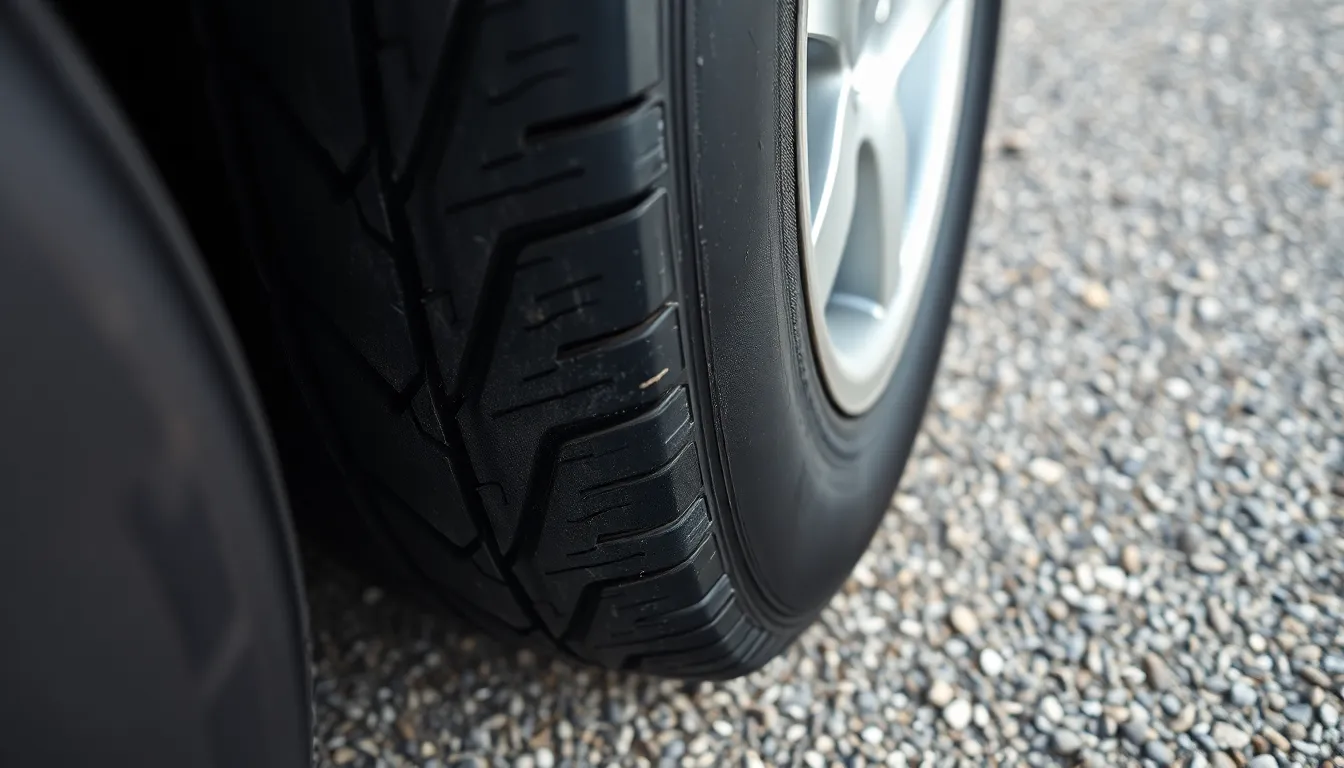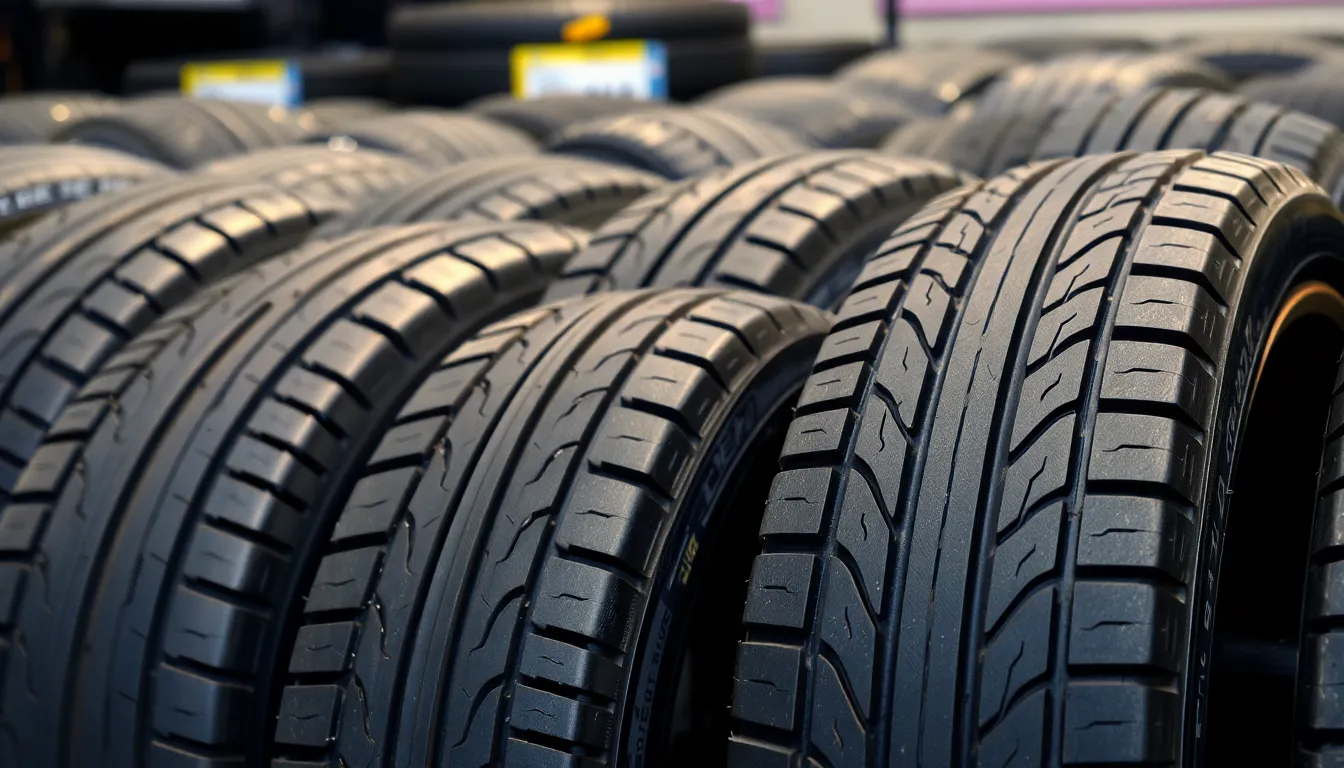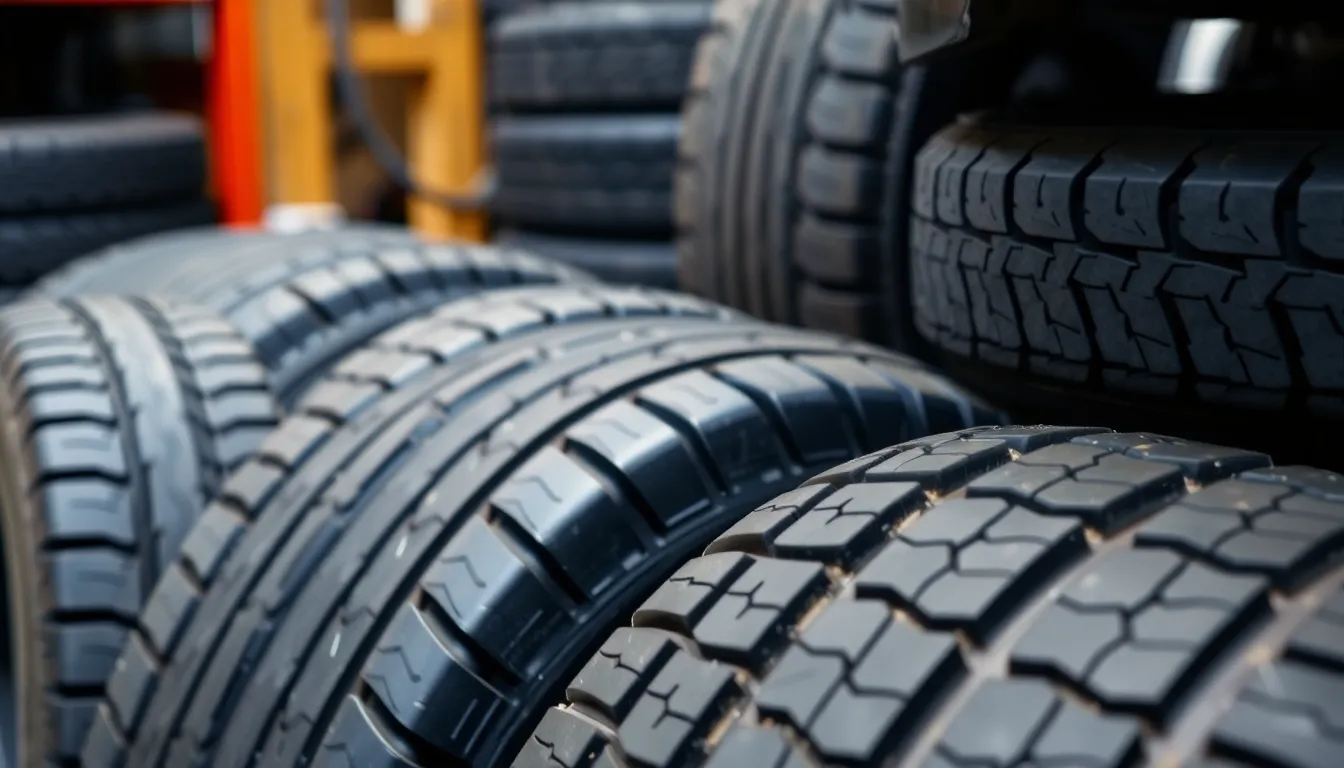We’ve all seen those mysterious numbers and letters on our tire sidewalls but most of us don’t really understand what they mean. One term that frequently confuses drivers is “ply” – a specification that plays a crucial role in your tire’s performance and safety.
Understanding tire ply isn’t just technical jargon for mechanics. It’s essential knowledge that affects everything from your vehicle’s load capacity to ride comfort and fuel efficiency. When you’re shopping for new tires or trying to maximize your current set’s lifespan this information becomes invaluable.
The concept of tire ply has evolved significantly since the early days of automotive history yet it remains one of the most important factors in tire construction. We’ll break down exactly what ply means how it impacts your driving experience and why it matters for your exact vehicle needs.
What Does Ply Mean on a Tire?
Ply refers to the layers of reinforcing materials that make up a tire’s internal structure. These layers consist of fabric cords coated with rubber compounds that provide the tire’s strength and shape retention under pressure. Manufacturing processes bond these individual plies together to create the tire’s carcass or body.
Traditional tire construction used cotton and rayon cords as the primary ply materials. Modern tires incorporate polyester, steel, aramid, and nylon fibers depending on the tire’s intended application. Each ply layer runs at exact angles to optimize the tire’s performance characteristics.
We categorize tire construction into two main types based on ply arrangement:
- Bias ply tires feature cord layers that cross each other at diagonal angles between 30 and 40 degrees
- Radial ply tires contain cord layers that run perpendicular to the tire’s centerline at 90-degree angles
The ply rating system originally indicated the actual number of cotton cord layers in bias ply tires. A 4-ply tire contained exactly four layers of cotton cords while an 8-ply tire had eight layers. This direct correlation between ply rating and physical layers established the foundation for tire strength classification.
Contemporary tire technology uses the term “ply rating” as a strength index rather than an actual count of layers. Today’s radial tires might have only two actual plies but carry a ply rating of 10 due to their superior strength from advanced materials like steel belts and high-tensile synthetic cords.
Load carrying capacity directly correlates with ply rating numbers. Higher ply ratings indicate greater load bearing capabilities and structural durability. Commercial vehicles and heavy-duty applications typically require tires with ply ratings between 12 and 20 to handle increased weight demands.
Passenger car tires commonly feature ply ratings between 4 and 6 which provide adequate strength for standard vehicle weights. Light truck tires often carry ply ratings of 8 to 10 to accommodate heavier loads and towing requirements.
Understanding Tire Ply Construction

Tire ply construction forms the foundation of every tire’s internal architecture through multiple reinforcing layers. These layers work together to create the structural integrity that determines load capacity and overall performance characteristics.
Radial vs Bias Ply Tires
Bias ply tires feature fabric cords that crisscross at diagonal angles throughout the tire structure. These intersecting layers create exceptional sidewall strength and superior load carrying capacity for demanding applications. Off road vehicles and heavy duty towing operations benefit most from bias ply construction due to its robust sidewall support.
Radial ply tires represent today’s industry standard with cord layers running perpendicular from bead to bead across the tire. This construction method delivers improved fuel efficiency compared to bias ply alternatives while improving road grip capabilities. Radial design also provides superior ride comfort through reduced rolling resistance and better heat dissipation.
Materials Used in Tire Plies
Modern tire manufacturers use diverse materials to optimize ply performance for exact applications:
| Material | Primary Benefits | Common Applications |
|---|---|---|
| Nylon | High strength and durability | Performance and heavy duty tires |
| Polyester | Flexibility and wear resistance | Passenger car tires |
| Steel | Maximum strength and stability | Radial tire belts |
| Fabric | Traditional construction method | Bias ply tires |
Nylon provides exceptional tensile strength while maintaining flexibility under stress conditions. Tire manufacturers incorporate nylon plies in performance applications where durability matters most.
Polyester offers excellent resistance to wear patterns and maintains consistent performance across temperature variations. Most passenger vehicle tires feature polyester ply construction for balanced performance characteristics.
Steel reinforcement appears primarily in radial tire belt systems where maximum stability becomes essential. Steel belted radial tires deliver superior high speed performance and extended tread life.
Fabric materials including cotton and rayon formed the foundation of early tire construction methods. These traditional materials still appear in specialized bias ply applications where exact performance characteristics are required.
How Tire Ply Rating Works

Tire ply ratings express a tire’s strength and load capacity through a standardized numbering system. Modern ply ratings function as strength indicators rather than representing actual physical layers due to advanced materials that provide greater strength with fewer plies.
Load Index and Ply Rating Relationship
Load Index provides comprehensive tire performance data that extends beyond basic ply ratings. This measurement system combines carrying capacity specifications with recommended speed parameters for optimal tire performance. Manufacturers correlate ply ratings directly with load ratings to establish maximum inflation pressure guidelines at peak load conditions.
| Ply Rating | Load Rating |
|---|---|
| 4 ply | Standard load |
| 6 ply | C1, C2 |
| 8 ply | D1, D2 |
| 10 ply | E1, E2 |
| 12 ply | F1 |
| 14 ply | G |
Each load rating corresponds to exact maximum inflation pressures that ensure safe operation. Higher load ratings demand increased inflation pressures to support greater weight capacities and maintain structural integrity during operation.
Common Ply Ratings Explained
Standard Load (4 Ply) tires serve passenger vehicles and light applications with basic load requirements. These tires provide adequate strength for daily driving while maintaining comfort and fuel efficiency.
Medium Duty (6-8 Ply) ratings accommodate light trucks and SUVs that carry moderate loads. Commercial applications often use these ratings for delivery vehicles and work trucks that require enhanced durability.
Heavy Duty (10 Ply) tires historically supported demanding applications and now carry equivalent load ratings like E1 or E2. Construction sites, agricultural equipment, and heavy towing operations benefit from this strength category.
Extra Heavy Duty (12-14 Ply) ratings handle extreme load conditions in commercial trucking and industrial applications. These ratings ensure maximum load carrying capacity while maintaining tire integrity under severe operating conditions.
Benefits of Different Ply Configurations

Different ply configurations offer distinct advantages depending on your vehicle’s requirements and driving conditions. Understanding these benefits helps you make informed decisions about tire selection for optimal performance and safety.
Single Ply vs Multi-Ply Performance
Single ply tires excel in passenger car applications by providing enhanced flexibility and comfort during daily driving. These tires absorb road imperfections more effectively due to their increased sidewall flexibility, resulting in smoother rides on paved surfaces. Radial construction with single ply design reduces rolling resistance, contributing to improved fuel efficiency ratings of up to 15% compared to multi-ply alternatives.
Multi-ply tires deliver superior load-carrying capacity and structural integrity for demanding applications. The multiple reinforcing layers create increased stiffness that supports heavier loads without compromising tire shape or performance. Commercial vehicles and heavy-duty trucks benefit from multi-ply construction’s ability to maintain stability under extreme weight conditions, with some configurations supporting loads exceeding 6,000 pounds per tire.
Performance characteristics vary significantly between these configurations based on intended use. Single ply designs offer better wet weather traction through improved road contact, while multi-ply versions provide enhanced resistance to sidewall damage from curbing and debris impacts.
Impact on Ride Quality and Durability
Ride quality improvements become evident with single ply tires through their superior shock absorption capabilities. The flexible sidewall construction allows these tires to conform to road surface irregularities, reducing vibration transmission to the vehicle cabin by approximately 25%. Passenger comfort increases substantially during highway driving and urban commuting scenarios.
Durability advantages favor multi-ply configurations in harsh operating environments and heavy-duty applications. These tires demonstrate enhanced puncture resistance through their multiple protective layers, reducing flat tire incidents by up to 40% in construction and off-road settings. The reinforced structure withstands cuts, scrapes, and impacts that would compromise single ply alternatives.
Temperature management differs between configurations, with single ply tires dissipating heat more effectively through improved flexibility. Multi-ply designs maintain structural integrity at higher operating temperatures but generate more heat due to increased internal friction. Load capacity ratings reflect these differences, with multi-ply tires supporting 2-3 times greater weight loads than comparable single ply versions.
Longevity patterns show multi-ply tires lasting 15-20% longer in commercial applications due to their robust construction, while single ply options provide adequate service life for typical passenger vehicle use patterns.
Choosing the Right Ply Rating for Your Vehicle

Selecting the appropriate ply rating ensures optimal tire performance and safety for your exact driving needs. We match ply ratings to vehicle weight, load requirements, and intended use to maximize tire effectiveness.
Passenger Car Considerations
Passenger vehicles require lower ply ratings since they’re lighter and don’t carry heavy loads like commercial vehicles. Most passenger car tires feature 4-ply ratings or less, providing adequate strength for everyday driving conditions while maintaining ride comfort and fuel efficiency.
Standard load passenger tires with 4-ply ratings handle typical city driving, highway commuting, and weekend trips effectively. These ratings offer sufficient load capacity for passengers, luggage, and groceries without compromising the smooth ride quality that drivers expect from their daily vehicles.
We recommend checking your vehicle’s door jamb placard to confirm the appropriate load index and ply rating specifications. Exceeding or underestimating these ratings can affect handling, tire wear patterns, and overall driving safety.
Truck and Commercial Applications
Trucks, SUVs, and commercial vehicles demand higher ply ratings to manage heavier loads and demanding driving conditions. These vehicles typically use tires with 10-ply, 12-ply, or 14-ply ratings to support increased weight capacity and enhanced durability requirements.
Although modern truck tires carry labels like 10-ply or 14-ply, they contain fewer actual fabric layers but use stronger materials like steel belts and advanced synthetic compounds. This construction approach delivers the load carrying capacity and structural integrity equivalent to traditional multi-ply designs while reducing overall tire weight.
Higher ply ratings in commercial applications provide enhanced sidewall stiffness, improved puncture resistance, and greater stability under heavy loads. Construction workers, delivery drivers, and fleet operators benefit from these characteristics when hauling equipment, materials, or cargo across various terrain types.
Towing applications particularly benefit from elevated ply ratings since the additional load stress requires extra tire strength and heat dissipation capabilities. We observe that 10-ply rated tires effectively handle boat trailers, RVs, and construction equipment transport while maintaining safe operating temperatures and structural integrity.
Conclusion
Understanding tire ply ratings empowers us to make informed decisions that directly impact our vehicle’s performance and safety. We’ve seen how these ratings serve as strength indicators that help match tires to exact driving needs and load requirements.
Whether we’re driving a passenger car or operating heavy-duty commercial vehicles the right ply rating ensures optimal tire performance. We can now confidently select tires that balance comfort fuel efficiency and load capacity based on our exact applications.
The evolution from traditional bias ply to modern radial construction demonstrates how tire technology continues advancing. By understanding these fundamentals we’re better equipped to maximize tire life enhance vehicle safety and improve our overall driving experience.
Frequently Asked Questions
What does “ply” mean on a tire sidewall?
Ply refers to the layers of reinforcing materials that make up a tire’s internal structure. These layers consist of fabric cords coated with rubber compounds that provide strength and help the tire maintain its shape. Modern tires use materials like polyester, steel, aramid, and nylon instead of the traditional cotton and rayon cords.
What’s the difference between bias ply and radial ply tires?
Bias ply tires have cord layers crossing at diagonal angles, offering exceptional sidewall strength and load-carrying capacity, making them ideal for off-road and heavy-duty applications. Radial ply tires have cord layers running perpendicular to the tire’s centerline, providing better fuel efficiency, road grip, and ride comfort through reduced rolling resistance.
How do ply ratings work in modern tires?
Ply ratings serve as a strength index rather than indicating actual physical layers. The rating system correlates with load-bearing capabilities – higher ply ratings mean greater load capacity. Passenger cars typically use 4-6 ply ratings, light trucks use 8-10, and commercial vehicles require 12-20 ply ratings for heavy-duty applications.
What materials are used in modern tire ply construction?
Modern tire manufacturers use various materials optimized for specific applications: nylon for high strength and durability in performance tires, polyester for flexibility in passenger cars, steel for maximum strength in radial tire belts, and traditional fabric materials like cotton and rayon in specialized bias ply applications.
What’s the relationship between ply rating and load capacity?
Higher ply ratings directly correlate with greater load-bearing capabilities and require increased inflation pressures. The Load Index provides comprehensive performance data combining carrying capacity with speed parameters. This relationship ensures tires can safely support specific weight limits when properly inflated according to manufacturer specifications.
Should I choose single ply or multi-ply tires?
Single ply tires excel in passenger car applications, offering enhanced flexibility, comfort, smoother rides, and improved fuel efficiency. Multi-ply tires provide superior load-carrying capacity and structural integrity, making them ideal for commercial vehicles, trucks, and heavy-duty applications requiring enhanced puncture resistance and longer service life.
How do I select the right ply rating for my vehicle?
Passenger cars typically require lower ply ratings (4-ply or less) for adequate strength and comfort. Trucks, SUVs, and commercial vehicles need higher ratings (6-14 ply) to manage heavier loads and demanding conditions. Consider your vehicle’s weight, intended use, and towing requirements when selecting the appropriate ply rating for optimal performance and safety.

